Face Value (1991)
Género : Documental
Tiempo de ejecución : 2H 0M
Director : Johan van der Keuken
Sinopsis
Face Value is a film combining a conscious approach with spontaneity, and contemplation with action. It presents us with the differing views of a region we call “Europe”, an imaginary Europe situated somewhere between London, Marseilles, Prague and the Netherlands.

"UNEMPLOYMENT DAY: MARCH 6th 1930." "Contingents of marchers arriving at Tower Hill." A long column of marchers carrying banners moves through great crowds (89); CS of a girl selling the 'Daily Worker' (99). "the Workers' International Relief food kitchen." Men and women eating sandwiches and drinking tea dispensed from the back of a lorry (190): a further shot of the assembled crowds (213). "A London docker speaks". A shot of his audience (223). "A women's contingent." A group of women hold up a banner which reads 'Thousands of children die of starvation in Britain - we demand bread (235); a speaker talks to the crowd (259). The demonstrators proceed to the Mansion House. The procession moves on (305).

La Guerra Civil española ejerció un fuerte impacto en los artistas de Hollywood. Muchos de ellos apoyaron campañas contra la política de no intervención del gobierno de Estados Unidos, participaron en mítines o pagaron ambulancias para el bando republicano. El documental muestra cómo se utilizó el conflicto en la meca del cine entre 1937 y 1975.

Story of a retired old man who is learning what to do with himself.

What is the nature of life? What is the nature of art? How can art influence our lives? These are the questions of this movie. The main character, a man who lives both in the world of dreams and reality, searches his past, in order to understand its meaning. He has meetings with the ghosts of his dead friend, his dead lover, his dead father and Pessoa, the great portuguese writer. These four encounters give him clues about what he is looking for. Beside that, he finds himself in front of art, discovering how it modifies our comprehension of life. It's based in one of Tabucci's (the italian writer)books: "Requiem". This few lines cannot resume the greatness of this movie. The last thing I can say is: If you like art, I recommend you to see it. If you ever wonder about the nature of dreams, or you live in dreams half of the time, I think you'll feel like this movie was made for you.

Un hombre maduro, situado entre las coordenadas que trazan su padre y su mujer, se encuentra con que todo lo que parecía garantizar su propia identidad presenta síntomas de fragilidad. Frágil el cuerpo, los afectos, la conciencia. Este hombre tomará distancia respecto de lo que hasta entonces parecía constituir su día a día. Un habitual viaje de negocios de medio día al interior del país se trasforma en otro viaje. Al llegar a destino, Juan Desouza, descubre que el hombre que viajaba a su lado no se despierta. Secretamente, casi como un juego, decide tomar la identidad de este hombre, inventarse una profesión, conseguir un lugar donde dormir: la posibilidad de no regresar. La posibilidad de ser otro, de ser muchos. En sus nuevos días libres, el hombre realizará, sin saberlo, una suerte de travesía hacia la naturaleza y al reencuentro de sus gustos, de sus instintos básicos, intentando abrazarse a la idea de que la vida que le tocó y que eligió vivir, no es la única posible.

“This shows the Fire Department leaving headquarters for an early morning fire. The scene is remarkable for its natural effect. The opening of the engine house doors, the prancing of the horses, and even the startled expression upon the faces of the spectators are all clearly depicted.” (Edison Films, 1897)
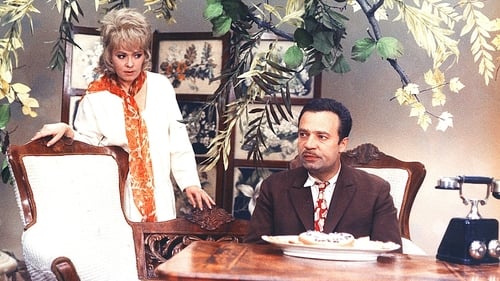
Comedy with fairy-tale touches, about Kate, who wants to marry, and Mr. Devil, who is not interested in the heart or soul of this passionate and aging lady, but is interested in her good cooking – for Mr. Devil is a glutton.

Christmas Eve. A poor orphan boy trudges through the snow, pathetically. He finally arrives at his miserable cabin. While he is crying, Santa arrives and, singing the title song, offers to take the boy to his workshop. They arrive, and the toys go wild (in the full version, they sing the title song, but this has been censored in some versions due to outdated stereotypes). He plays with a few toys. A candle falls off the tree and starts a fire. The toys try in vain to fight the fire; the boy hooks up a hose to a set of bagpipes and takes care of it.

In 1962, François Truffaut visited the Mar del Plata Film Festival to present his competition in the brand-new Jules and Jim. At that stage of the Festival, from 1954 to 1970, names that today sound mythical were common figures among the guests. Truffaut, along with his colleagues from the Cahiers du Cinéma, would take French films by storm with Les 400 Coups (1959) and the Nouvelle Vague would become a key movement in the history of cinema. A few years after his debut and accompanied by the success of Jules and Jim, Truffaut was already well on his way to becoming a legend. In his visit to the Festival, in 16 mm titled Los 4 Golpes (this, in Castilian), even exhibiting in that look a playful look on his work. This short film, for different reasons, was rarely shown and remains a rarity in the director's film.
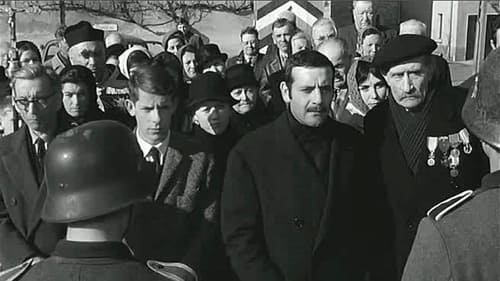
Invierno de 1941. Francia está partida en dos. En el norte, la zona ocupada. En el sur, la Francia libre. Justo en la línea que separa las dos Francias, hay un pequeño pueblo. Un día, un miembro de la Resistencia es lanzado en paracaídas, pero cae abatido. Es encontrado por aldeanos del pueblo, que lo ocultan en el hospital. Poco a poco el pueblo entero se irá movilizando. El Conde de Danville, que hasta entonces había rechazado oponer resistencia a los ocupantes, se dará cuenta de que su deber será sacrificarse para facilitar la evasión a zona libre del militar de la "Résistance".
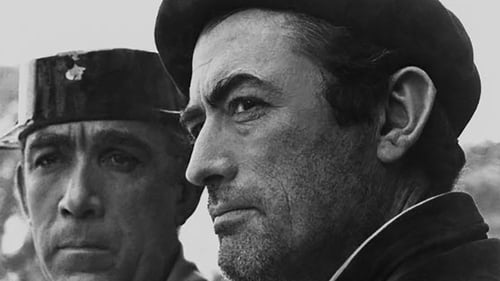
Una vez terminada la guerra civil española (1936-1939), Manuel Artíguez (Gregory Peck), un popular miembro del maquis, abandona España y se refugia en Francia. Veinte años más tarde, el hijo de su mejor amigo, atraviesa la frontera para pedirle que vuelva a España y mate a Viñolas (A. Quinn), un sargento de la Guardia Civil responsable de la muerte de su padre. Pero Artíguez, hastiado de todo, no atiende la petición del chico. Sin embargo, cuando la madre del guerrillero cae gravemente enferma, Viñolas aprovecha la ocasión para tenderle una trampa. Este film estuvo prohibido en España hasta 1979.

Antonio conoce a María, que vive recluida en un asilo regentado por monjas. Vive así porque está avergonzada de cómo es: tiene pelos en cara y brazos. Antonio la convence para que se vaya con ella, ha visto un gran negocio: exhibirla como si fuera una mujer simia que encontró en la selva africana. (FILMAFFINITY)
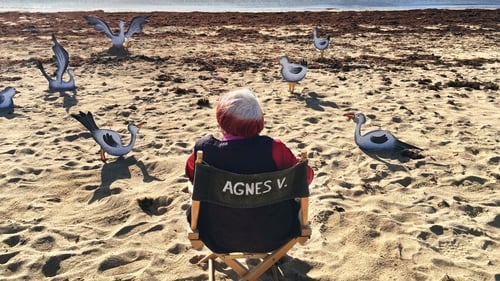
Agnès Varda presenta su nuevo documental en el que sigue demostrando que es toda una institución del cine francés, pero una oponente dura contra cualquier tipo de pensamiento institucional. Utilizando sus propias obras, Varda trata de ilustrar sus visiones e ideas y, también su vida. Una vida dividida en dos partes: en primer lugar, el período analógico (1954-2000), en el que se propuso cambiar la idea del cine y los documentales de ficción, y la segunda etapa (2000-2018) para explicar cómo la tecnología digital ha resultado ser un arma más con la que poder explicar el mundo que la rodea.
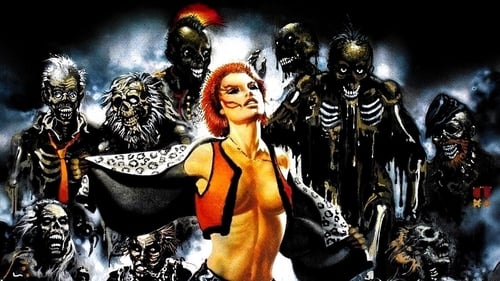
Frank y su aprendiz Freddy terminan su turno en un almacén de productos sanitarios. Charlando, Frank cuenta al joven que los hechos narrados en lapelícula la Noche de los Muertos Vivientes fueron reales, pero han sido ocultados por las autoridades. Para convencer al chico de queno miente, le lleva al sótano, donde le enseña un barril que contiene a uno de los zombies, y el gas que en su momento le devolvió la vida. Accidentalmente abren el barril, liberando tanto al muerto viviente como el gas, que alcanza un cementerio cercano. Sin saberlo, un grupo de jóvenes que han ido a pasar la noche al cementerio serán testigos del despertar de los muertos.

La película habla de la figura de Picazo a través una joven estudiante que descubre en una proyección al aire libre en un pueblecito de Jaén ‘La tía Tula’. Deslumbrada por esta obra maestra, decide investigar sobre su autor y los motivos de su escasa filmografía. En el transcurso de este proceso conocerá en primera persona las claves de este singular realizador e indagará en una generación que marcó las pautas del cine español contemporáneo. La historia de Miguel Picazo es, en el fondo, una historia del cine español.

Quid (Stacy Keach) es un camionero americano, que trabaja en Australia, que es contratado para llevar una carga desde Melbourne hasta Perth, a lo largo de la carretara que atraviesa el desierto. Por esos parajes, un serial killer está atacando a mujeres en la carretera, y Quid sospecha de una misteriosa furgoneta verde...

Experimental psychodrama about a friend of Krolikiewicz's alcohol addiction (though the themes of the film are universal). One of the first attempts to apply the director's theory of "Film space outside the frame".

A documentary on the revolutionary life and career of director Juan Antonio Bardem, including interviews with many of his colleagues, including Luis Garcia Berlanga.

Un Cineasta Griego, Theo Angelopoulos, Emprende Un Viaje Desde Atenas Hasta Ostia, La Playa Romana Donde Pier Paolo Pasolini Fue Asesinado.











